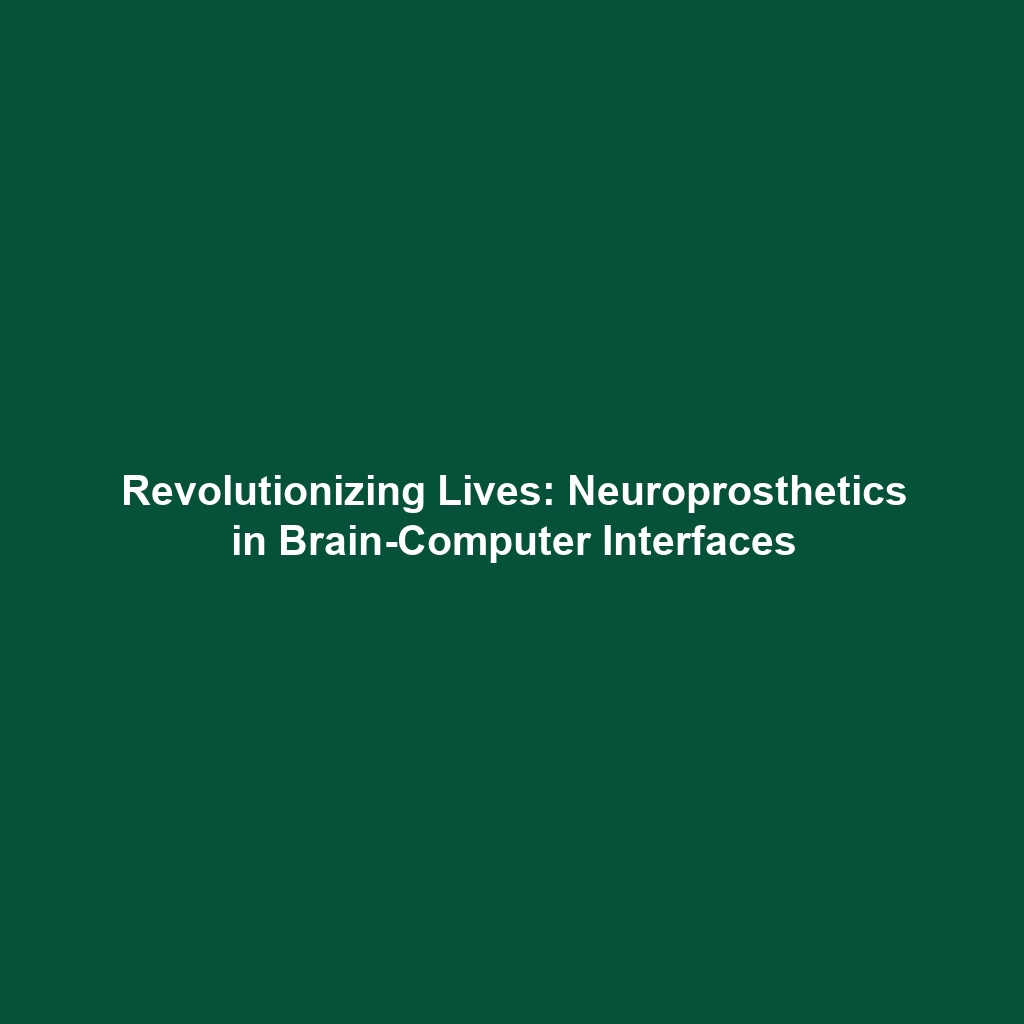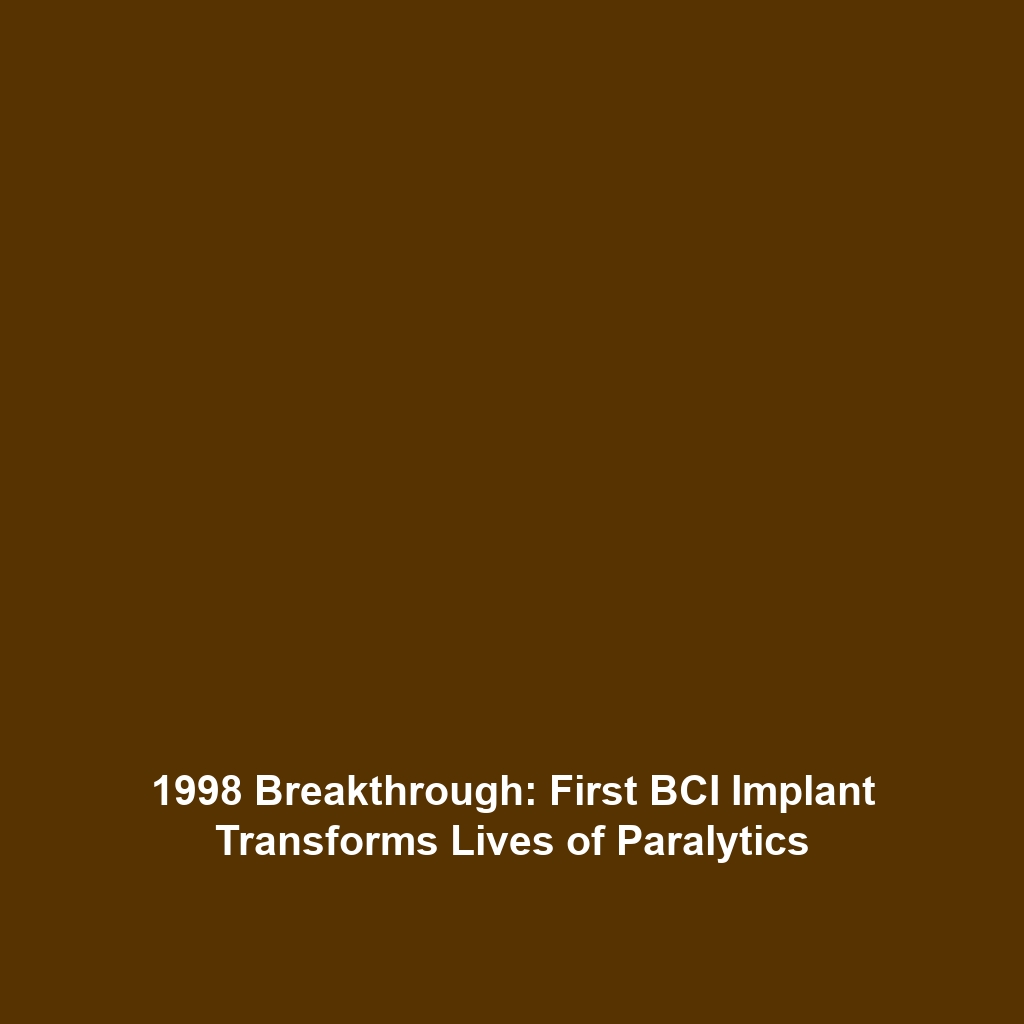Neuroprosthetics: Innovations in Brain-Computer Interfaces
Neuroprosthetics represents a revolutionary intersection within the field of Brain-Computer Interfaces (BCIs). This branch of neuroscience aims to develop devices that can replace or enhance the functions of the nervous system, especially for individuals with disabilities. These advanced technologies not only restore lost functionalities but also open up new avenues for treatment and rehabilitation. By enabling direct communication between the brain and external devices, neuroprosthetics signifies a significant advancement in medical science, paving the way for more intuitive and effective therapies.
Key Concepts of Neuroprosthetics
At its core, neuroprosthetics utilizes Brain-Computer Interfaces to facilitate communication between neural systems and artificial devices. The main concepts include:
- Neural Encoding: Understanding how the brain encodes specific thoughts or intentions.
- Signal Processing: Techniques for interpreting neural signals and translating them into actionable commands for prosthetics.
- Feedback Loops: Implementing systems that provide sensory feedback to users for improved control over devices.
Applications and Real-World Uses
Neuroprosthetics is transforming the landscape of Brain-Computer Interfaces through various applications, including:
- Restoration of Movement: Devices that allow paralyzed individuals to control robotic limbs or exoskeletons.
- Vision Restoration: Devices such as retinal implants to provide visual information to people with severe vision loss.
- Brain Stimulation: Deep brain stimulators that can assist in managing severe neurological disorders like Parkinson’s disease.
These advancements illustrate how neuroprosthetics is used in Brain-Computer Interfaces to enhance quality of life by restoring functionality that was once lost.
Current Challenges of Neuroprosthetics
Despite its potential, there are significant challenges in neuroprosthetics that researchers continue to face:
- Signal Clarity: Ensuring that the signals produced by the brain are clear and easily interpretable by devices.
- Long-term Stability: Maintaining device functionality over extended periods and in diverse conditions.
- Ethical Considerations: Addressing the ethical implications of interfacing human brains with technology.
Future Research and Innovations
The future of neuroprosthetics is promising, with research focusing on:
- Next-Gen Materials: Developing biocompatible materials for implants that will minimize immune responses.
- Advanced Algorithms: Employing machine learning to enhance the accuracy of signal interpretation for real-time responsiveness.
- Closed-Loop Systems: Creating systems that adaptively respond to users’ intentions and feedback.
Conclusion
In summary, neuroprosthetics is a vital and evolving area within Brain-Computer Interfaces, with significant implications for rehabilitation and treatment strategies in neurology. As research advances, the potential to enhance or restore functions in patients will likely become a reality. For further insights and developments in this field, consider exploring our articles on related technologies and breakthroughs in neuroscience.




